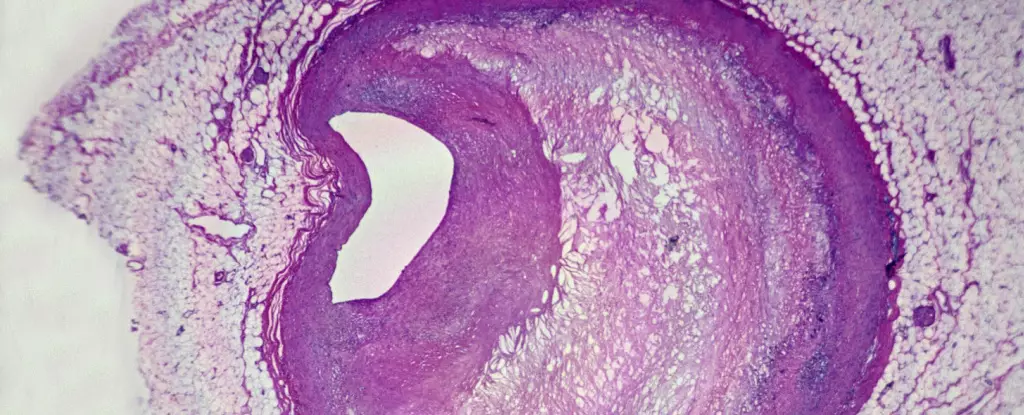In our modern world, plastics have infiltrated almost every aspect of our daily lives, becoming virtually ubiquitous. Their convenience comes at a shocking cost: tiny fragments known as microplastics are now being identified in various human organs, including the sensitive placenta. As these microscopic particles find their way into human tissue, it raises a pressing question about their potential health risks. The current body of research indicates that microplastics might pose significant dangers, yet the full extent of their impact, particularly concerning cardiovascular health, remains woefully underexplored.
Research and Methodologies: The Quest for Understanding
Researchers have dedicated significant effort to examining the effects of microplastics through various methods, including experimental studies using miniature organ models and animal subjects. However, a critical concern arises as the concentrations of microplastics used in these studies often do not accurately mirror real-world human exposure. Most studies have focused on animals, leaving a glaring gap in direct human research.
An Italian study published recently provided valuable insights into this issue. Conducted by a team led by Raffaele Marfella from the University of Campania in Naples, the research involved analyzing fatty deposits surgically removed from patients who underwent carotid endarterectomy, a procedure designed to alleviate clogged arteries and reduce the risk of stroke. This study uniquely tracked the health outcomes of 257 patients over a period of 34 months, marking a significant step in associating microplastics with real health implications.
The findings were startling. It was revealed that nearly 60% of the patients had detectable levels of polyethylene in their arterial plaques, a key component in numerous everyday plastic items, such as bags and bottles. Additionally, 12% exhibited traces of polyvinyl chloride (PVC), a plastic often found in construction materials and packaging. The researchers noted that these substances could potentially contribute to inflammation and oxidative stress within cardiovascular tissues, leading to severe health consequences.
The significance of these findings cannot be overstated, especially when considering that patients with microplastics present in their plaques faced a staggering 4.5 times greater risk of experiencing a stroke, non-fatal heart attack, or death compared to those without microplastic presence. Such data supports growing anxieties over the cumulative effects of plastic pollution in humans, particularly regarding heart health.
The researchers utilized advanced methodologies, including pyrolysis-gas chromatography-mass spectrometry, to measure microplastic concentration accurately. Their findings were corroborated through stable isotopes analysis, which differentiates between plastics’ carbon content and that of human cells. Moreover, microscopic examinations unveiled distressing images of plastic fragments within immune cells, highlighting the alarming penetration of these pollutants into biological systems. Higher levels of inflammatory markers were also observed in patients with microplastics in their arterial plaques, suggesting a potential connection to cardiovascular disease.
However, caution is warranted in interpreting these findings. Observational studies, while revealing associations, cannot definitively establish causality. It remains crucial to account for other risk factors such as lifestyle choices, air pollution, and pre-existing health conditions in evaluating patient outcomes. Therefore, while the presence of microplastics in cardiovascular tissue marks a groundbreaking discovery, more comprehensive research is essential to deepen our understanding of the mechanisms at play.
The implications of this research extend beyond individual health, raising urgent questions about the need for public health initiatives aimed at reducing plastic exposure. Philip J. Landrigan, a public health expert, emphasized the necessity of addressing this emerging threat to health as plastic production continues to rise, creating a toxic environment for future generations. The reality is stark: only a small fraction of plastics produced are recycled, and as their presence accumulates in our bodies, so too does the potential risk of serious health complications.
As the link between microplastics and cardiovascular health surfaces, it becomes imperative to further investigate the connection between plastic exposure and heart disease. While air pollution and lifestyle habits have long been recognized as risk factors for cardiovascular issues, the emerging data on microplastics presents an additional layer of complexity to an already multifaceted problem. The pursuit of cleaner environments, effective recycling methods, and rigorous public health policies must take precedence if we aim to safeguard not only our health but also the health of future generations.
As we stand at the crossroads of plastic pollution and health risks, the time for decisive action and in-depth research is now.

